Reviews
Why Estonian Artist Flo Kasearu Enlisted Domestic Violence Survivors as Collaborators on Her New Show
Estonia has staggeringly high rates of violence against women.
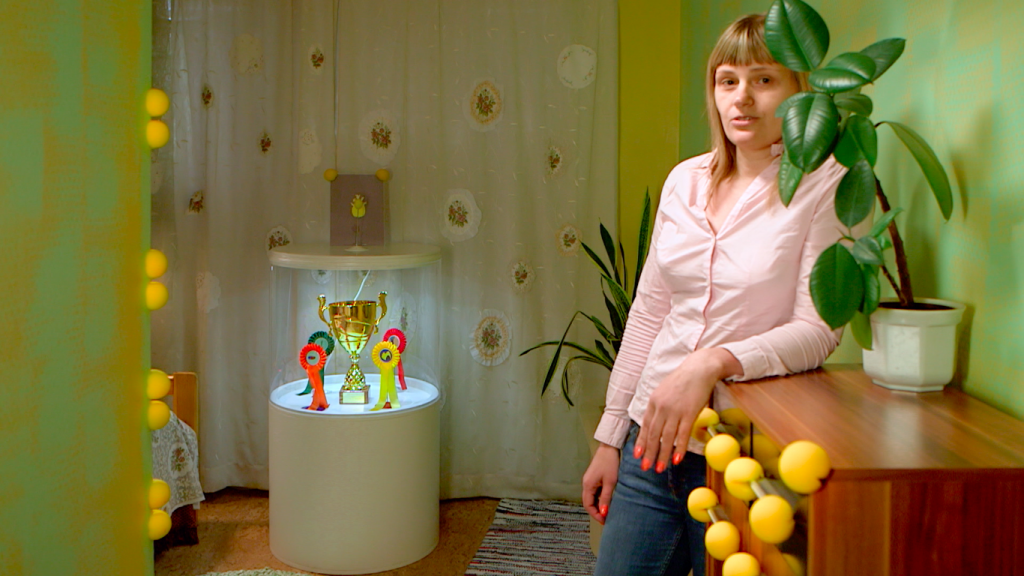
Estonia has staggeringly high rates of violence against women.

Kate Brown

“When do we go away from here?” wrote a young girl named Johanna in a note that’s framed and hanging as the opening artwork of Flo Kasearu’s recently opened exhibition at Estonia’s Tallinn Art Hall.
It’s not a work of fiction. Johanna is real, and the anxiety packed into her brief question is one of the many true emotional stories woven into Kasearu’s first major institutional show, “Cut Out of Life.” Children are both the start and end points of the poignant exhibition, which focuses on an extremely tough subject: domestic violence.
As it happens, Kasearu is better versed than most. Her mother has been running a women’s shelter since 2009 in the Estonian city of Pärnu.
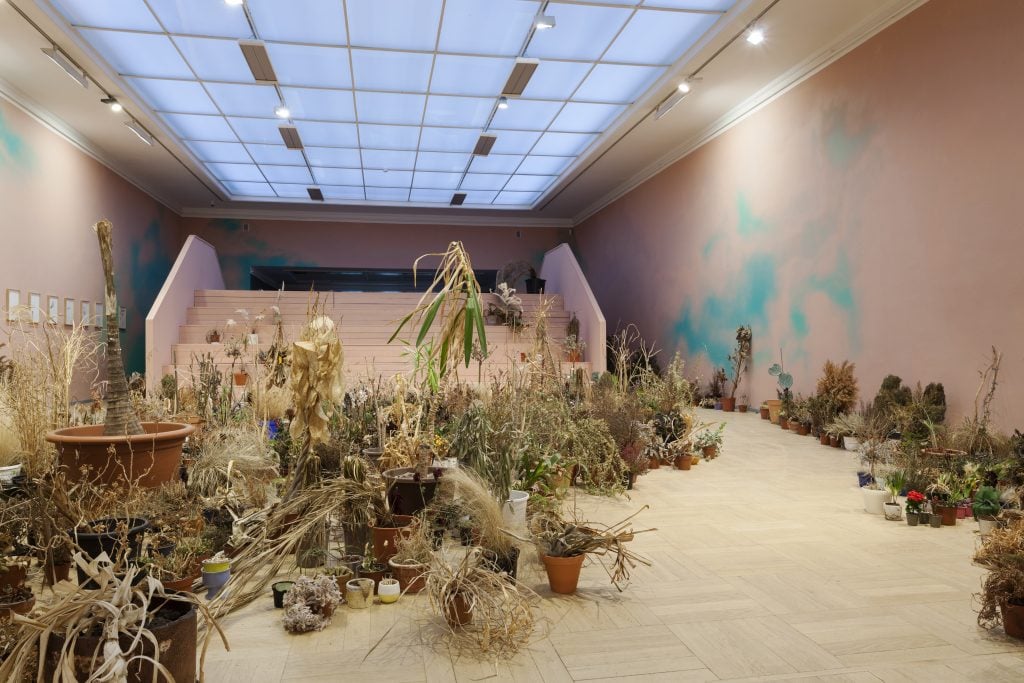
Exhibition view of Flo Kasearu, “Cut Out of Life,” at Tallinn Art Hall. Photos by Paul Kuimet, Tallinn Art Hall 2020.
“The story of Mila has, so far, a good ending,” the artist tells me as she takes me through a virtual tour of the show. Mila and her mother managed to escape their abusive household, thanks, in part, to the women’s shelter. But the problem remains chronic: Estonia has high rates of violence against women— affecting one in three women. And the shuttering of public life due to lockdowns has been even more detrimental, causing domestic abuse to rise worldwide.
The exhibition chronicles stories from scores of women, all of which were collected with consent from residents at the shelter. There’s a wall full of some of the excuses the artist’s mother commonly heard from perpetrators—everything from financial problems to being an underweight twin—which Kasearu then reinterpreted as sarcastic doodles, showing the ridiculous fallibility of any justification for abuse.
Although the subject has been given renewed urgency in the West due to the onset of the #metoo movement in 2017, Kasearu has long been preoccupied by women’s issues. In a video work from 2016, Kasearu created a symbolic parliament where women read their court statements out loud. At the Tallinn Art Hall, a viewer can also take a seat on a similar bleacher and watch a recorded video of the event. Empathy, but not sensationalism, is Kasearu’s goal.
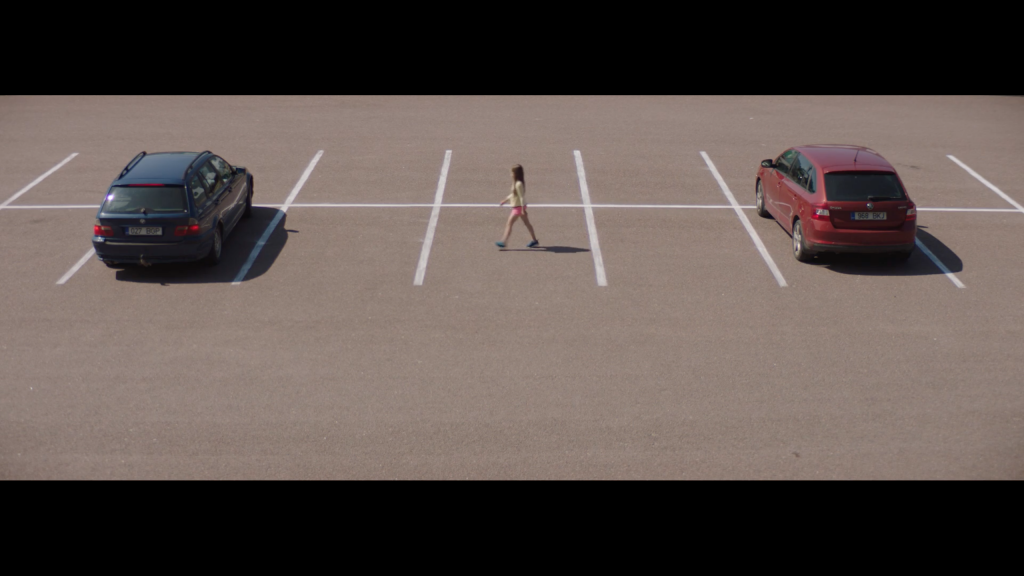
A still from Child Welfare (2020). Courtesy of Flo Kasearu.
“My aim is to make art that is beneficial to these women, and empowering to them,” she says. “We are doing something together here… The women from my mother’s support group often say that if they can convince one woman to get out of this violence, it is already worth it to do this work.”
Other works speak to the vulnerability of the domestic space more generally, such as the decaying house plants in the main hall of “Cut Out of Life.” Kasearu keeps a collection of similar plants at home, which she calls the Flo Kasearu House Museum, where she lives with her child, running the place as a total work of art (there are viewing hours, and part of the house accommodates tours, while other areas are roped off for privacy).
The story of the House Museum is fascinating: The wooden slat heritage home once belonged to her great-grandparents before they were dispossessed of it during the Soviet Union’s communizing project. Kasearu, who is 35, and her mother finally got it back some years ago. Naturally, the artist is its director.

Exhibition view of Flo Kasearu, “Cut Out of Life,” at Tallinn Art Hall. Photos by Paul Kuimet, Tallinn Art Hall 2020.
“Kasearu belongs to the generation of young Estonian artists who witnessed a change of power after the collapse of the bipolar world order,” says Cathrin Mayer, who curated the exhibition. The artist’s unique perspective on power can be felt in her tongue-in-cheek critiques of domesticity and traditional female roles, both in her personal museum and the exhibition in Tallinn.
Playfulness, almost incredibly, shines through the somber subject matter. Many works are colorful and almost game-like. Bits of green linger on tropical plants in various states of entropy. “It is a sign that there is always hope,” Kasearu tells me.
But its aesthetic value isn’t the only reason the show is victorious. Art, when it is successful, sparks a conversation while simultaneously giving space for poetry and play in a way that court proceedings, government programs, and therapy sessions can’t.
It seems to already be working: On its opening weekend, Kasearu toured the exhibition with her mother and the women from the shelter who had offered their experiences for it. Another woman was visiting the show at the same time and, after watching Kasearu’s tour for a while, approached the artist’s mother. The support group began speaking with her, and Kasearu’s functional chair sculptures were right there for all of them to take seats on.
Flo Kasearu’s “Cut out of Life,” curated by Cathrin Mayer, is on view at Tallinn Art Hall until Mach 28. Take a virtual tour of the show here.
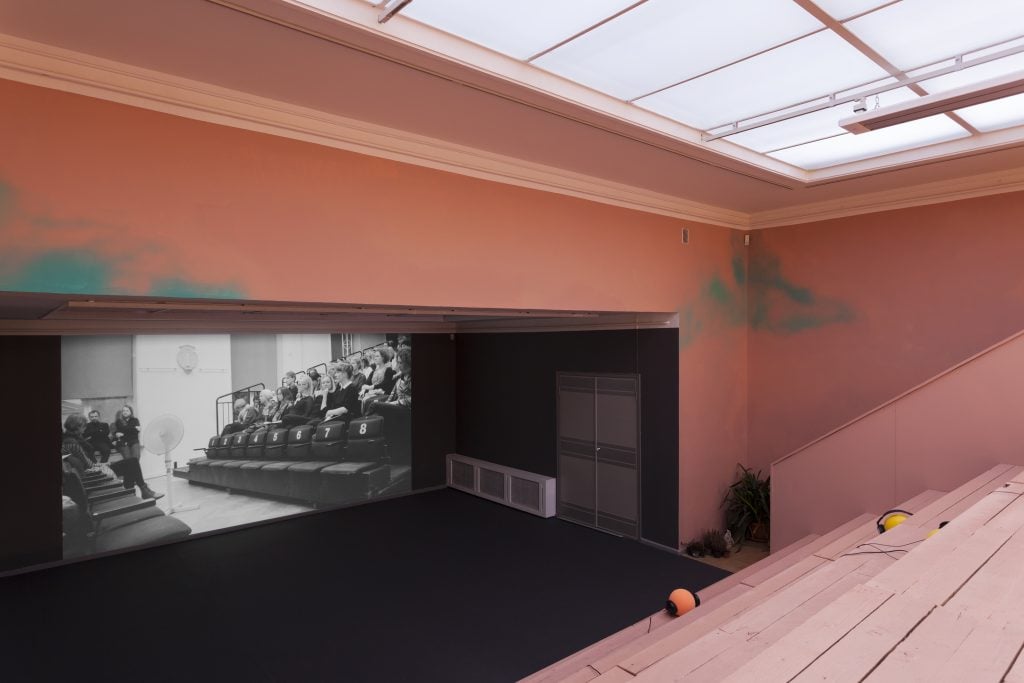
Exhibition view of Flo Kasearu, “Cut Out of Life,” at Tallinn Art Hall. Photos by Paul Kuimet, Tallinn Art Hall 2020.
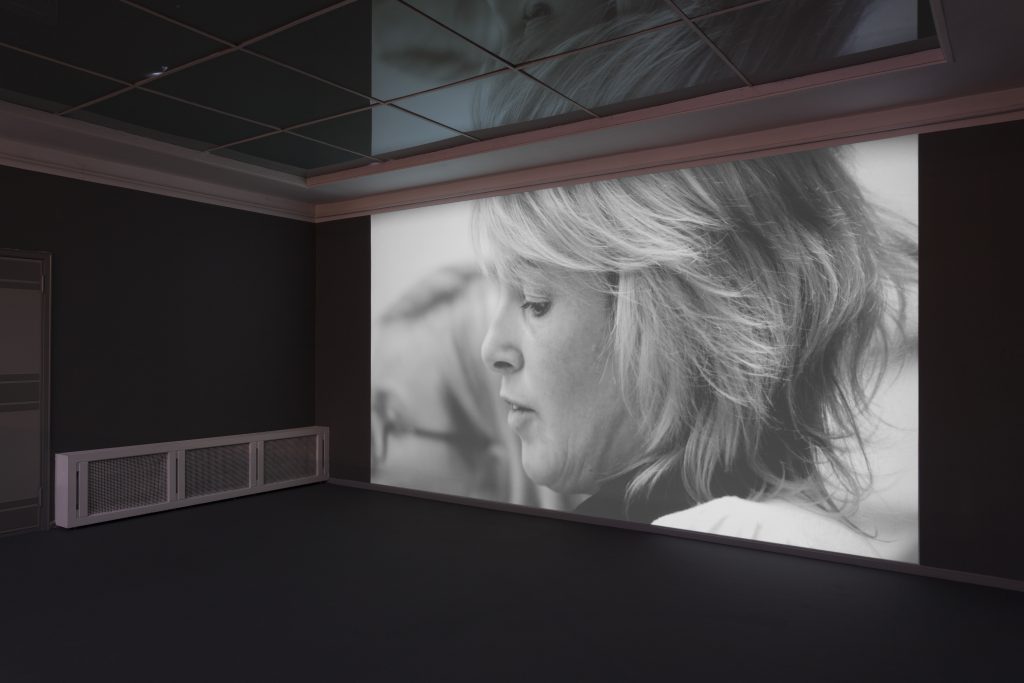
Exhibition view of Flo Kasearu, “Cut Out of Life,” at Tallinn Art Hall. Photos by Paul Kuimet, Tallinn Art Hall 2020.
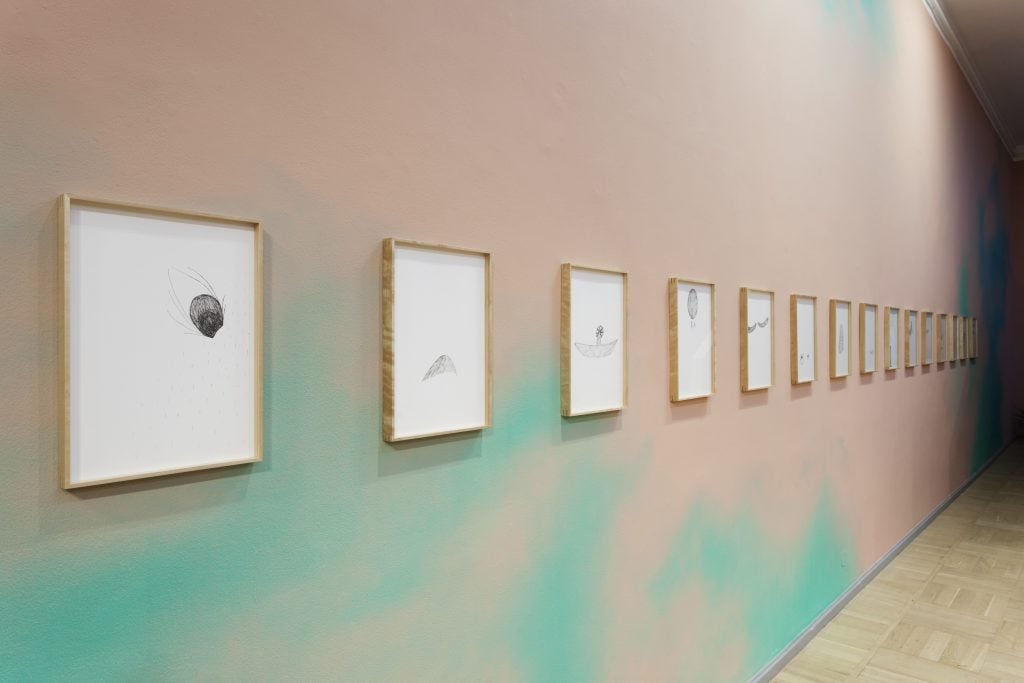
Exhibition view of Flo Kasearu, “Cut Out of Life,” at Tallinn Art Hall. Photos by Paul Kuimet, Tallinn Art Hall 2020.

Exhibition view of Flo Kasearu, “Cut Out of Life,” at Tallinn Art Hall. Photos by Paul Kuimet, Tallinn Art Hall 2020.

Exhibition view of Flo Kasearu, “Cut Out of Life,” at Tallinn Art Hall. Photos by Paul Kuimet, Tallinn Art Hall 2020.

Exhibition view of Flo Kasearu, “Cut Out of Life,” at Tallinn Art Hall. Photos by Paul Kuimet, Tallinn Art Hall 2020.
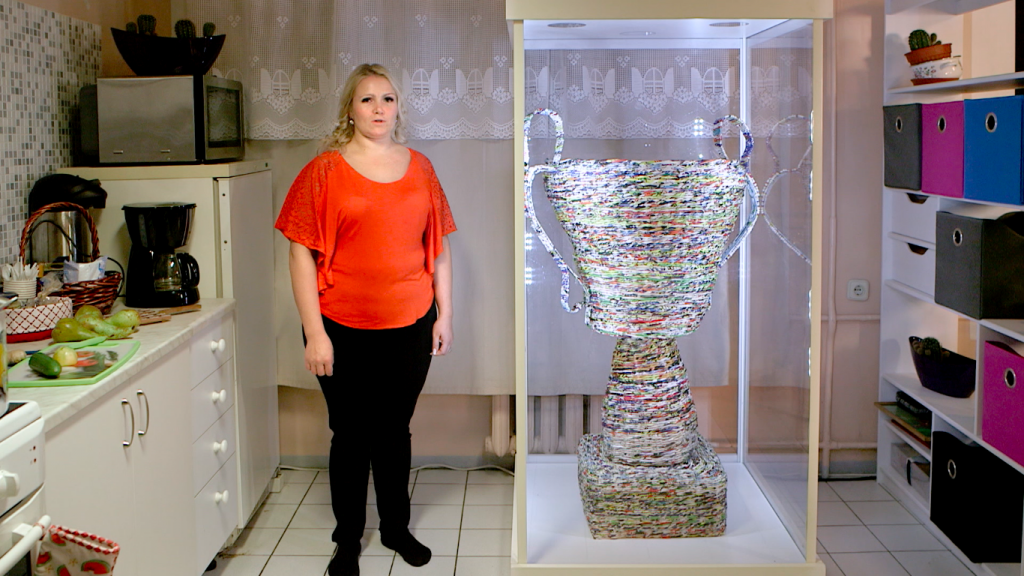
Still from Flo Kasearu’s Festival of the Shelter (2018). Courtesy Tallinn Art Hall and the artist.

Exhibition view of Flo Kasearu, “Cut Out of Life,” at Tallinn Art Hall. Photos by Paul Kuimet, Tallinn Art Hall 2020.

Exhibition view of Flo Kasearu, “Cut Out of Life,” at Tallinn Art Hall. Photos by Paul Kuimet, Tallinn Art Hall 2020.